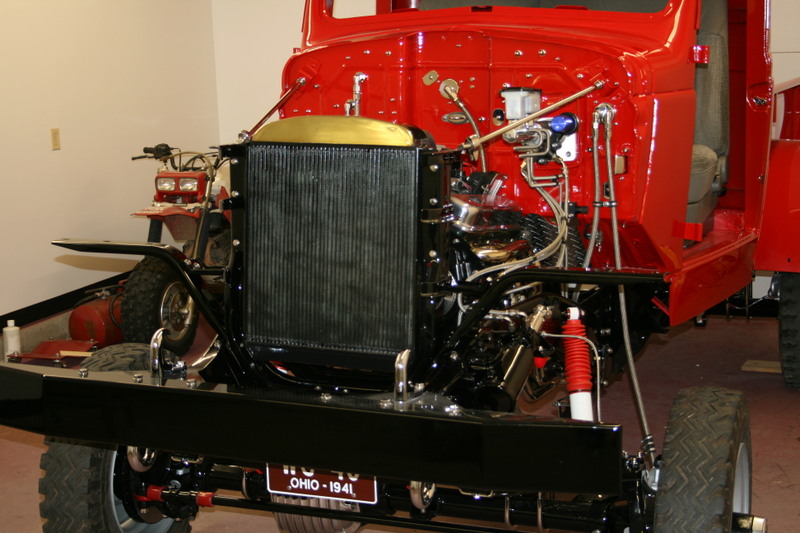Hi guys, I have the yellow 6x6 built by Bob Jones with the first gen Cummins 6BT in it. It appears that I am going to have to have a custom radiator with bigger tubes built for it and I figured it would be a good idea to ask here if anyone has had this done and what your experience was. If anyone has a technical drawing of a flat fender radiator, that would be a big help as well.
The issue I'm having is that it runs hot on the highway, especially with a load on the trailer. I have changed it over to Evans waterless coolant to stop it boiling over, and removed the hood to let the hot air out... both of which have helped. It is now fine bobtailing around town, but it doesn't take long on the highway to hit 235-240 degrees. When I pull up to a stoplight it comes down to 180 by the time the light turns green. This seems to me to be a heat exchange efficiency problem rather than airflow or coolant volume.
I realize the the temperatures I'm running at aren't completely outrageous (i.e. melted pistons, scalded bearings, etc.) but its keeping me from driving the truck as often and as far as I would like, because I'm apprehensive about ruining an engine on a long trip.
Ultimately I would like to get it running cool enough that I can put the hood back on, because I think it looks better that way... though I may need to have the top of the hood louvered to help with heat evacuation from the engine compartment.
The issue I'm having is that it runs hot on the highway, especially with a load on the trailer. I have changed it over to Evans waterless coolant to stop it boiling over, and removed the hood to let the hot air out... both of which have helped. It is now fine bobtailing around town, but it doesn't take long on the highway to hit 235-240 degrees. When I pull up to a stoplight it comes down to 180 by the time the light turns green. This seems to me to be a heat exchange efficiency problem rather than airflow or coolant volume.
I realize the the temperatures I'm running at aren't completely outrageous (i.e. melted pistons, scalded bearings, etc.) but its keeping me from driving the truck as often and as far as I would like, because I'm apprehensive about ruining an engine on a long trip.
Ultimately I would like to get it running cool enough that I can put the hood back on, because I think it looks better that way... though I may need to have the top of the hood louvered to help with heat evacuation from the engine compartment.

Comment